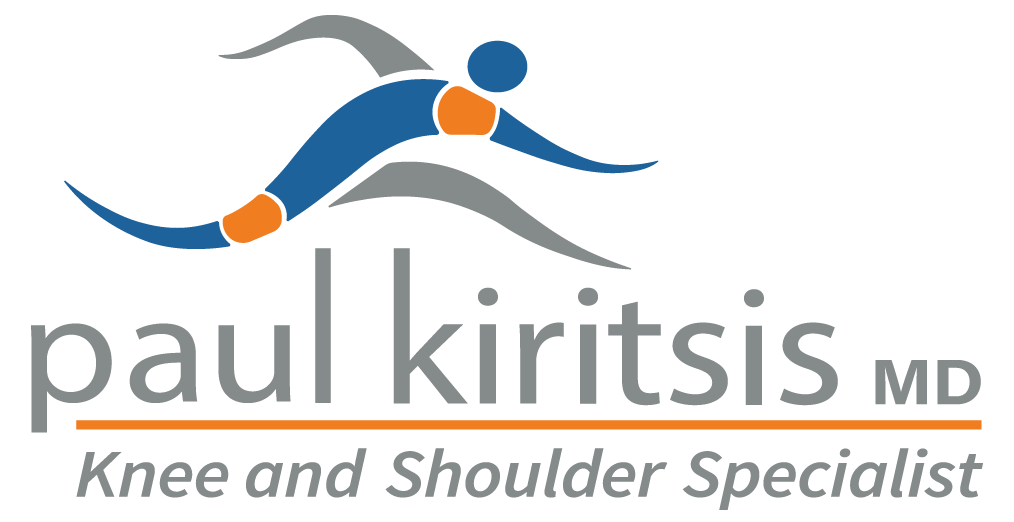Knee Disorders Richmond VA
Office Location
Dr. Kiritsis' Specialties
Schedule an Appointment with Dr. Kiritsis
Knee Disorders & Injuries
Disorders of the Knee | Orthopedic Surgery | Sports Medicine
The anterior cruciate ligament (ACL) is probably the most commonly injured ligament in the knee.
In most cases, the ligament is injured by people participating in athletic activity.
As sports have become an increasingly important part of day-to-day life over the past few decades, the number of ACL injuries has steadily increased.
This injury has received a great deal of attention from orthopedic surgeons over the past 15 years, and very successful operations to reconstruct the torn ACL have been invented.
When the anterior cruciate ligament (ACL) in the knee is torn or injured, surgery may be needed to replace it. There are many different ways to do this operation. One is to take a piece of the hamstring tendon from behind the knee and use it in place of the torn ligament.
When arranged into three or four strips, the hamstring graft has nearly the same strength as other available grafts used to reconstruct the ACL.
The anterior cruciate ligament (ACL) is a major stabilizer of the knee joint. This key knee ligament is commonly torn during sports activities. The standard operation to fix a torn ACL is with a patellar tendon graft.
The surgeon takes out the middle section of the patellar tendon below the kneecap (patella). This new graft includes the strip of tendon, along with attached plugs of bone on each end.
For this reason, it is sometimes referred to as a bone-patellar-tendon-bone graft. The surgeon removes the torn ACL and puts the new graft into the knee, making sure to line it up just like the original ligament.
Many types of tissue grafts have been tried. The patellar tendon graft has proven to be one of the strongest for ACL reconstruction.
Patients who have this operation generally get back to their usual activities and sports. They often do so faster than people who have their ACL reconstructed with other types of tissue grafts.
Articular cartilage problems in the knee joint are common.
Injured areas, called lesions, often show up as tears or potholes in the surface of the cartilage. If a tear goes all the way through the cartilage, surgeons call it a full-thickness lesion.
When this happens, surgery is usually recommended. However, these operations are challenging. Repair and rehabilitation are difficult.
Dr. Kiritsis will consider many factors when determining the procedure that’s best for you.
The collateral ligaments are commonly injured parts of the knee. An injury to these ligaments usually involves a significant force, such as a fall while skiing or a direct impact to the side of the leg.
Nonsurgical treatment of knee osteoarthritis (OA) focuses on reducing pain and maintaining or improving joint function. Doctors commonly prescribe acetaminophen and nonsteroidal anti-inflammatory drugs (NSAIDs) to relieve pain and swelling in arthritic patients. Newer NSAIDs called COX-2 inhibitors are showing promise as well.
In recent years, two unique compounds have been used by people with knee OA. These compounds are gaining greater acceptance among many doctors. Glucosamine and chondroitin sulfate are dietary supplements usually taken in pill form that are thought to protect and possibly help repair cartilage cells.
Glucosamine and chondroitin sulfate are somewhat controversial treatments. While some studies have supported their effectiveness in relieving the symptoms of knee OA, the research still leaves many unanswered questions, especially about long-term effects.
The big group of muscles and tendons in the back of the thigh are commonly called the hamstrings. Injuries in this powerful muscle group are common, especially in athletes. Hamstring injuries happen to all types of athletes, from Olympic sprinters to slow-pitch softball players.
Though these injuries can be very painful, they will usually heal on their own. But for an injured hamstring to return to full function, it needs special attention and a specially designed rehabilitation program.
Iliotibial band (ITB) syndrome is an overuse problem that is often seen in bicyclists, runners, and long-distance walkers. It causes pain on the outside of the knee just above the joint.
It rarely gets so bad that it requires surgery, but it can be very bothersome. The discomfort may keep athletes and other active people from participating in the activities they enjoy.
To better understand how knee problems occur, it is important to understand some of the anatomy of the knee joint and how the parts of the knee work together to maintain normal function.
First, we will define some common anatomic terms as they relate to the knee. This will make it clearer as we talk about the structures later.
Many parts of the body have duplicates. So it is common to describe parts of the body using terms that define where the part is in relation to an imaginary line drawn through the middle of the body.
For example, medial means closer to the midline. So the medial side of the knee is the side that is closest to the other knee. The lateral side of the knee is the side that is away from the other knee.
Structures on the medial side usually have medial as part of their name, such as the medial meniscus. The term anterior refers to the front of the knee, while the term posterior refers to the back of the knee. So the anterior cruciate ligament is in front of the posterior cruciate ligament.
The meniscus is a commonly injured structure in the knee. The injury can occur in any age group. In younger people, the meniscus is fairly tough and rubbery, and tears usually occur as a result of a forceful twisting injury. The meniscus grows weaker with age, and meniscal tears can occur in aging adults as the result of fairly minor injuries, even from the up-and-down motion of squatting.
The meniscus is very important to the long-term health of the knee. In the past, surgeons would simply take out part or all of an injured meniscus.
But today’s surgeons know that removing the meniscus can lead to early knee arthritis. Whenever possible, they try to repair the tear.
If the damaged area must be removed, care is taken during surgery to protect the surrounding healthy tissue.
Osteoarthritis (OA) is a common problem for many people after middle age. OA is sometimes referred to as degenerative, or wear and tear, arthritis. OA commonly affects the knee joint.
In fact, knee OA is the most common cause of disability in the United States. In the past, people were led to believe that nothing could be done for their problem.
Now Dr. Kiritsis has many ways to treat knee OA so patients have less pain, better movement, and enhanced quality of life.
Osteochondritis dissecans (OCD) is a problem that affects the knee, mostly at the end of the big bone of the thigh (the femur).
A joint surface damaged by OCD doesn’t heal naturally. Even with surgery, OCD usually leads to future joint problems, including degenerative arthritis and osteoarthritis.
The patellar tendon is the thick, strong “ligament” that connects your patella to your tibia. We often see, especially in jumping athletes, swelling and pain that occur at the patellar attachment of this tendon. This disorder is often called “jumper’s knee”.
Patellofemoral problems can be a source of knee pain when it fails to function properly. Alignment or overuse problems of the patella can lead to wear and tear of the cartilage behind the patella.
This produces pain, weakness, and swelling of the knee joint. Several different problems can affect the patella and the groove it slides through in the knee joint. These problems can affect people of all ages.
Plica syndrome is an interesting problem that occurs when an otherwise normal structure in the knee becomes a source of knee pain due to injury or overuse.
The diagnosis can sometimes be difficult, but if this is the source of your knee pain, it can be easily treated.
A popliteal cyst, also called a Baker’s cyst, is a soft, often painless bump that develops on the back of the knee. A cyst is usually nothing more than a bag of fluid.
These cysts occur most often when the knee is damaged due to arthritis, gout, injury, or inflammation in the lining of the knee joint. Treatment is usually successful when the actual cause of the cyst is addressed. Otherwise, the cyst can come back again.


Paul G. Kiritsis, MD
Dr. Kiritsis, a Richmond native, is one of a select number of Orthopedic Surgeons in the Richmond area to hold a second subspecialty board certification in Sports Medicine.

